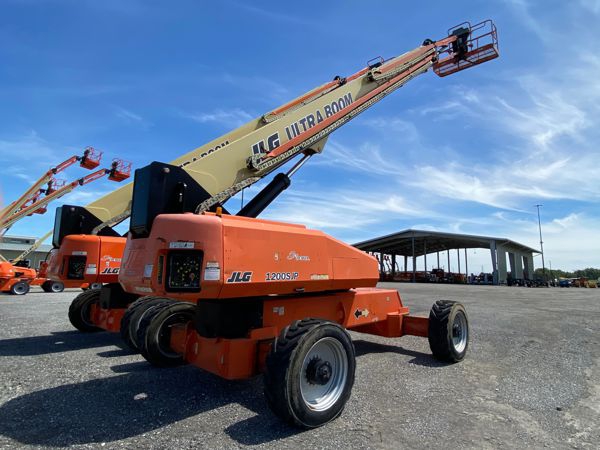
Aerial lifts are essential tools used to access elevated areas, especially in construction and maintenance projects. These versatile machines come in various forms, such as boom lifts, articulating boom lifts, scissor lifts, and telescopic boom lifts. Each type is designed for specific tasks, making them a go-to choice for many professionals.
Over the years, aerial lifts have become more popular than traditional scaffolding and ladders due to their increased mobility and ability to reach difficult spots. They allow workers to perform tasks safely and efficiently at heights that would otherwise be challenging or dangerous.
Today, two of the most well-known manufacturers of aerial lifts are JLG and Terex's Genie. These companies produce high-quality equipment that meets strict safety standards and is widely used across industries.
Like any heavy machinery, aerial lifts carry inherent risks if not operated properly. Common hazards include falls from height, objects falling from the platform, tip-overs, ejection from the lift, structural failures, electrocution near power lines, and entanglement. It’s crucial to understand these dangers to prevent accidents and ensure a safe working environment.
The Occupational Safety and Health Administration (OSHA) has developed detailed guidelines for the safe use of aerial lifts on job sites. Following these regulations can significantly reduce the risk of injury and improve overall site safety.
Pre-Lift Inspection
Before every work shift, it's vital to conduct a thorough inspection of the aerial lift. This includes checking the vehicle components, lift systems, and the surrounding work area. Always refer to the manufacturer's guidelines to ensure the equipment is in optimal condition.
-
Vehicle Components:
- Check fluid levels (oil, hydraulic, fuel, coolant)
- Look for signs of leaks
- Inspect wheels and tires
- Examine battery and charger
- Test lower-level controls
- Verify horn, gauges, lights, and backup alarms
- Check steering and brakes
-
Lift Components:
- Ensure operating and emergency controls are functional
- Confirm PPE is available and in good condition
- Inspect hydraulic, air, pneumatic, fuel, and electrical systems
- Check insulating materials like fiberglass
- Make sure all labels, warnings, and instructions are visible
- Look for missing or damaged fasteners and locking pins
- Inspect cables and wiring harnesses
- Check outriggers, stabilizers, and other structures
- Look for loose or missing parts
- Verify guardrail systems are intact
-
Work Zone Inspections
- Identify drop-offs, holes, or unstable ground
- Check for adequate ceiling clearance
- Look for slopes, ditches, or bumps
- Clear debris and floor obstructions
- Be aware of overhead power lines and communication cables
- Avoid working in high winds or icy conditions
- Ensure no one is too close to the work area
Safety Practices When Operating An Aerial Lift
Fall Protection
- Keep access gates and openings closed at all times.
- Stand firmly on the platform with both feet.
- Never climb over or lean on guardrails.
- Avoid using planks, ladders, or other makeshift tools inside the platform.
- Use a body harness or restraining belt with a lanyard attached to the boom or bucket.
- Do not tie off to nearby structures while in the bucket—this could cause ejection during movement.
Operation/Traveling/Loading
- Never exceed the load capacity. Consider the combined weight of people, tools, and materials.
- Do not use the aerial lift as a crane—it is not designed for lifting heavy loads.
- Do not carry items larger than the platform size.
- Avoid driving with the platform raised unless the manufacturer allows it.
- Only operate lower-level controls if authorized by the worker(s) in the lift (except in emergencies).
- Respect vertical and horizontal reach limits.
- Avoid operating in high winds beyond the manufacturer's recommendations.
- Never override safety devices such as hydraulic, mechanical, or electrical systems.
Overhead Protection
- Be mindful of overhead clearance and potential obstacles.
- Avoid positioning the lift between overhead hazards when possible.
- Treat all overhead power lines and cables as live and maintain a minimum distance of 10 feet.
- Ensure that utility workers de-energize power lines in the work area.
Aerial Lift Stability
- Set outriggers on stable surfaces or pads.
- Engage brakes when using outriggers.
- Use wheel chocks on sloped surfaces when safe to do so.
- Place warning signs or cones around the work zone to alert others.
Group Discussion Topics
- Is the aerial lift in good condition? Conduct a visual check daily for tire pressure, hydraulic lines, and signage.
- Are there any overhead hazards like power lines or gas pipes nearby?
- How stable is the ground surface where the lift will be used?
- How many people will be on the platform? Does the total weight stay within limits?
- What factors might cause the lift to tip over?
Find Similar Articles By Topic
#construction #material handling #toolbox talks #aerial lifts #Terex #JLG
Countertop Convenience,Compact Cooking Tools,Essential Kitchen Gadgets
YIWU ACKILISS ELECTRIC CO..LTD , https://www.ackiliss.com